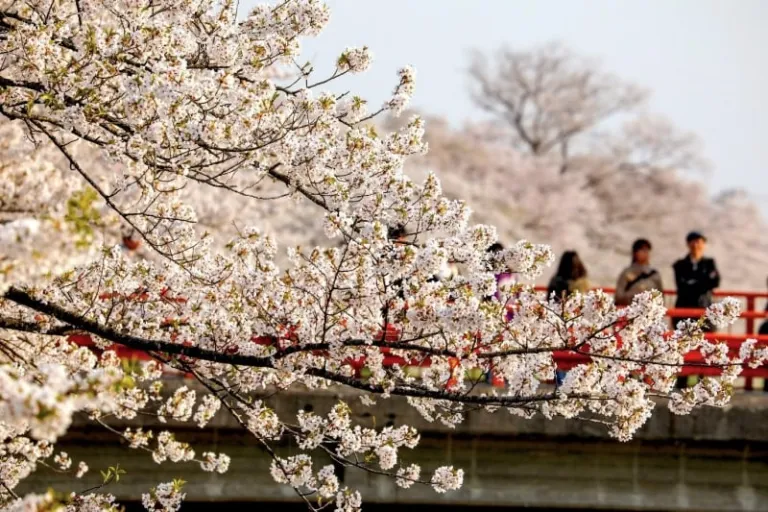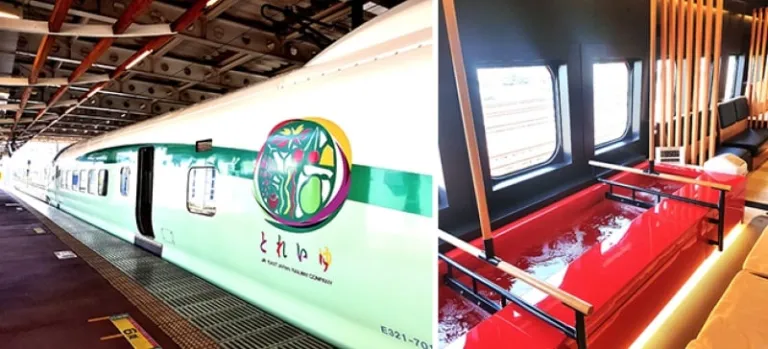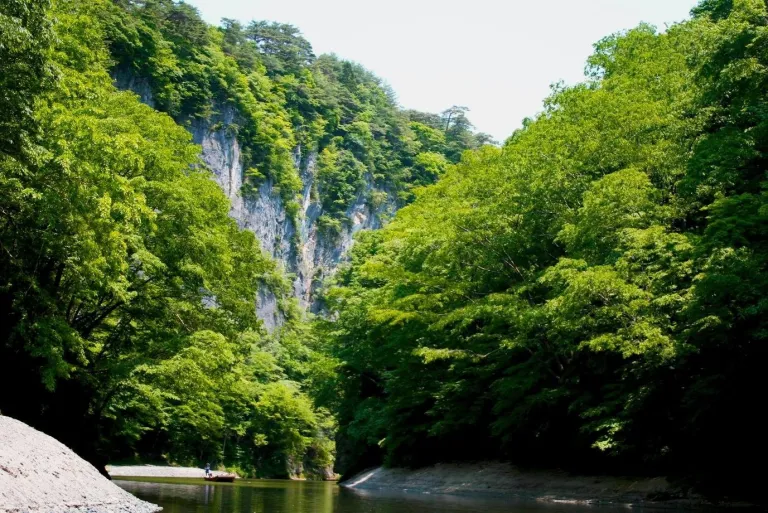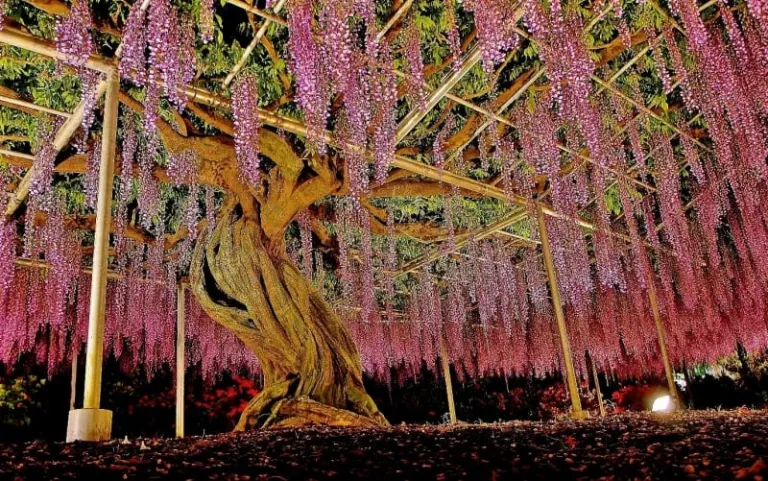Our favourite places to stay on this sleepy Cebu island.
These Sakura Itineraries Will Take You to Japan’s Best Viewing Spots Throughout April!

Sakura are undoubtedly Japan’s heralds of spring. Locals and tourists alike make travel plans specially to admire the blooms as the cold, dreary winterscapes fade away in time, making the weathermen’s mission of predicting the kaika (開花; the emergence of blooms) all the more important. Changes in the climate over recent years however, have caused this temperature-sensitive event to differ from its yearly averages, making it less easy to predict when they will happen.

With Tohoku stretching across northeastern Japan, blooms can appear for an extended period between April and early May. Travelling around the region is also easy and fuss-free with the JR EAST PASS, giving you a higher chance of catching spring’s heralds.
|
The JR EAST PASS (Tohoku area) is priced only as much as a shinkansen round trip between Tokyo and Sendai — incredible value for unlimited rides all over Tohoku and from/to major airports. What’s more, all JR East shinkansen, express and regular trains, and even Joyful Trains are available to travel in! Explore each destination to its fullest before you head off to your next, as the PASS allows for any five days of usage within a 14-day period. |
In this article, we’ll be taking you to the best spots to view magnificent cherry blossoms — as well as the many sights, tastes, and experiences along the way — in Tohoku, no matter which day in April it is! So, grab your bags and don’t forget your PASS — it’s time to see the best of what Tohoku has to offer!
Itinerary 1: Early to Mid-April (Southern Tohoku Area)
Leg 1: Tokyo → Fukushima → Hanamiyama Park → Fukushima | Hotel METS Fukushima
Head out from Tokyo station on the Shinkansen for 80 minutes to Fukushima station. After a 15-minute bus ride, walk for 10 minutes to reach Hanamiyama Park.
Hanamiyama Park
Average blooming periods
Start of bloom (開花): 09 Apr
Full bloom (満開): 13 Apr
End of bloom (終了): 18 Apr

Literally named “Flower-viewing Mountain”, Hanamiyama Park is home to over 10 varieties of cherry blossoms and other flowers such as peach blossoms and forsythia. Once the private treasure of its owners, this park is now open for all to appreciate its beauty. With its elevated location, visitors can enjoy the sea of flowers spanning down the hill, a view of the city below, and Mount Azuma in the distance.

Nearest station: Fukushima Station
Getting there: Hanamiyama Park is accessible via shuttle buses from Fukushima Station both during hanami (flower viewing) season at East Exit Bus Stop No. 6, and off-season at East Exit Bus Stop No. 8
Admission: Free!
From Hanamiyama Park, head back to Fukushima Station.
Food stop: Enban Gyoza

A Fukushima speciality for over half a century, Enban Gyoza (literally meaning ‘dumpling disk’) are not your average fried dumplings. Both fried and served in the shape of the circular frying pan used, Enban Gyoza are extra crispy on the outside and chewy on the inside — dumplings at their finest!

Locals typically tuck into the dish as an accompaniment to alcohol, and despite them being usually served in platters of 20–30, Enban Gyoza aren’t difficult to finish as they are filled with more crunchy vegetables than meat. Take your pick from the selection of Enban Gyoza restaurants in the vicinity of Fukushima Station.
Leg 2: Fukushima → Sendai → Funaoka Joshi Park → Hitome Senbonzakura → Sendai | Hotel Metropolitan Sendai
From Fukushima, take the shinkansen for 10 minutes to Sendai Station, then transfer to the local train on the Tohoku Main Line for 25 minutes to reach Funaoka Station.
Funaoka Castle Park and Hitome Senbonzakura
Average blooming periods
Start of bloom (開花): 10 Apr
Full bloom (満開): 14 Apr
End of bloom (終了): 19 Apr

Your next stop is the only site in Miyagi to be among Japan’s Top 100 Sakura Viewing Spots, and it’s not hard to see why. At Funaoka Castle Park, you can board the old-fashioned monorail (¥500) to pass through the 300m tunnel of sakura trees. A 24m-tall Funaoka Heiwa Kannon statue greets you at the end of the ride, together with sweeping views of Mount Zao, the town below and nearby Hitome Senbonzakura lining the nearby Shirakawa Riverside.
Cross the bridge to the banks of Shiroishi River to get to Hitome Senbonzakura.

Literally named, “a thousand sakuras in one glance”, Hitome Senbonzakura is an 8-kilometre stretch of 1,200 sakura trees lining the waters of Shiroishi River. Witness both winter and spring at the same time, as you lose yourself in a sea of blossoms against the backdrop of snow-capped Mount Zao — a sight unique to the Tohoku region.

Nearest station: JR Funaoka Station
Getting there: 15-minute walk from JR Funaoka Station
Admission: Free!
Head back to Sendai City to explore the sights and tastes it has to offer, or wait till sundown to enjoy the yatai (food stalls) and illuminated night views at Hitome Senbonzakura.
Food stop: Gyutan, Zunda Shake, and Oysters

Originating from the entrepreneuring mind of Keishiro Sano in post-war Japan, Gyutan are thinly sliced pieces of cow tongue char-grilled to culinary perfection. Quickly gaining the love of Sendai locals when it was first introduced, the dish is today one of Sendai’s specialities. Try Gyutan, as it’s typically served here — with a side of barley rice and oxtail soup.

If you need something to quench your thirst after all that Gyutan, try Zunda Shake, a vanilla blend of edamame paste and milk that’s both delicious and healthy. Head over to Zunda Saryo to grab a cup, or try out their other Zunda products such as Zunda Mochi and Zunda Kakigori.

With Sendai located right next to the sea, you’ll be missing out if you don’t try the all-you-can-eat s in one of Japan’s major oyster-producing cities. You can easily find oyster restaurants and bars in and around Sendai Station as well, so get cracking!
Detours: Sendai and beyond

If you wish to explore more of Sendai and its surrounding areas, head over to Aoba Castle to enjoy the view of the city from Mount Aoba, or marvel at rare and intricate Momoyama architecture at the Zuihoden Mausoleum, where three rulers of Sendai from the Date Clan (such as powerful feudal lord Date Masamune) are laid to rest.

If you have the time, travel 40 minutes on the JR Senseki Line out to Matsushima Bay for fresh seafood and one of Japan’s three most scenic views.

A 50-minute bus ride from Sendai Station will take you to Akiu Onsen, a historic hot spring town featuring more than 15 established hot spring inns set against a backdrop of tranquil nature. Be sure to visit as well Rairai Gorge and Akiu Craft Village while you’re there!
|
Travelling around Sendai but want to save your JR EAST PASS for long-distance travelling? Make use of the one-day Sendai Area Pass, which lets you on all subways and buses to get around Sendai and the places above easily. |
Leg 3: Sendai → Fukushima → (Toreiyu Tsubasa) → Yamagata → Kajo Park → Yamagata | Hotel Metropolitan Yamagata
For weekday and public holiday travellers: Hop on the JR Senzan Line from Sendai Station to get to Yamagata Station in 80 minutes.
For weekend travellers: From Sendai Station, take the Shinkansen for 10 minutes to head back to Fukushima Station. At Fukushima Station, board the Toreiyu Tsubasa for an hour’s ride to Yamagata Station.
Railway experiences: Toreiyu Tsubasa

Enjoy the experiences of a hot spring town as you gaze out at the passing scenery aboard the Toreiyu Tsubasa! A special train which pays homage to the many hot spring towns in Yamagata Prefecture, you can rest your tired feet in a footbath and take home a special Toreiyu Tsubasa towel as a souvenir for ¥450. Enjoy traditional tatami seating or enjoy locally produced beverages as you zip to your next destination.
From Yamagata Station, walk for ten minutes to reach Kajo Park.
Kajo Park
Average blooming periods
Start of bloom (開花): 14 Apr
Full bloom (満開): 19 Apr
End of bloom (終了): 26 Apr

One of Japan’s top 100 historic parks, Kajo Park houses many cultural facilities, such as the Yamagata Prefectural Museum, the Saiseikan (Museum of Medical History), and the former citadel of Yamagata Castle, a dedicated national historic site.

Over 1,500 somei-yoshino cherry blossom trees grow in this park, making it one of Yamagata’s prime sakura-viewing spots. Enjoy the blooms in their daytime glory, or bask in their otherworldly glow in the night illuminations. Don’t forget to have your picture taken with the Edo-period actors who make their appearance during the sakura season.
Nearest station: JR Yamagata Station
Getting there: 10-minute walk from JR Funaoka Station, or board the Sekizawa-bound bus and get off at Bijutsukan-Mae stop (four minutes).
Admission: Free!
Leg 4: Yamagata → Sendai → Ichinoseki → (Pokemon Train) → Geibikei → Kitakami → Kitakami Tenshochi Park → Morioka | Hotel Metropolitan Morioka
Board the JR Senzan Line from Yamagata Station for 80 minutes to Sendai, then transfer over to the shinkansen to arrive at Ichinoseki in 30 minutes.
For weekend and public holiday travellers: Board the POKÉMON with YOU Train to Geibikei Station. Geibikei Gorge is a five-minute walk from the station.
For weekday travellers: From Ichinoseki Station, ride the JR Ofunato Line for 40 minutes to Geibikei Station. Walk for five minutes to reach Geibikei Gorge.
Railway experiences: POKÉMON with YOU Train

This Pikachu-themed train truly is a Joyful Train, first coming to life to bring smiles and cheer to children affected by the 2011 tsunami and earthquake. Today, you can also take part in the same joy as you ride in this special train decorated after the adorable electric mouse. This train is made up of only two cars (a seating cabin and a playroom), so you’ll definitely want to book seats in advance as they get snagged up quickly!

The JR EAST PASS lets you ride on all Joyful Trains for free, and to make sure you get a seat on these special trains, you can reserve seats for up to 14 passengers one month before departure for free! Free reservations with the JR EAST PASS also apply to Shinkansens and express trains. |
Geibikei

50-metre cliffs and rock formations tower all around as you glide down the clear, serene waters at Geibikei Gorge on a 90-minute boat ride — it’s a sight that will take you right into the heart of nature. Have fun feeding the fishes and listening to the boatman’s song while you’re on the boat, or aim for good luck as you hurl “lucky stones” into a special cavity in the rock face.
Head back to Ichinoseki Station via Geibikei Station on local train for 40 minutes. From Ichinoseki Station, board the shinkansen for 17 minutes to Kitakami Station. After arriving at Kitakami Station, take a five-minute boat ride across the river, or walk for 20 minutes to Kitakami Tenshochi Park.
Kitakami Tenshochi Park
Average blooming periods
Start of bloom (開花): 17 Apr
Full bloom (満開): 22 Apr
End of bloom (終了): 29 Apr

Home to more than 10,000 trees of over 150 species, the 293-hectare Kitakami Tenshochi Park needs no other reason to be another of Japan’s Top 100 Sakura Spots. Enjoy the Kitakami Tenshochi Sakura Festival from mid-April to early May as different varieties of sakura burst into colour throughout the period.

Don’t miss the horse wagon ride which will bring you through two kilometres of sakura – a one-of-a-kind experience!
Nearest station: JR Kitakami Station
Getting there: Take a five-minute boat ride across the river to Kitakami Tenshochi Park (available only during sakura season) or walk for 20 minutes to get there.
Admission: Free!
Food stop: Morioka’s Three Great Noodles
Get your noodle fix with these three regional specialities of Morioka!

Bearing similarities to its Chinese and Korean counterparts, Jajamen combines together the saltiness of miso, the sweetness of meat, the succulence of chopped vegetables and the chewiness of noodles to bring you a feast for your palate. Finish up your remaining noodles with chi tan tan (egg soup), which you can request from the waiter.

If you’re looking for a much cooler dish, then Reimen could be what you’re looking for. A culinary dish with Korean and Japanese origins, the dish features cold translucent noodles served in spicy soup for a zesty kick. Pair the noodles with some watermelon and grilled meat for a tasty meal!

Not full after having those two dishes? Well, fill up your belly with Wanko Soba, an eat-till-you-drop soba experience that only stops when you’re quick enough to cap your bowl with the lid!
Each consisting of a single bite-sized serving of noodles, The bowls, once emptied, are stacked up in neat columns of 15, which is equivalent to one regular-sized bowl of soba. On average, men can aim for a hundred bowls, while women can consume up to 80.
Wanko Soba eating competitions are held regularly, with a standing record of 570 bowls — by a lady, no less! However, Wanko Soba is traditionally not intended to be eaten quickly or in large quantities, so enjoy it at your own pace.
Leg 5: Morioka → Tokyo
It’s time to head back! Hop on the Shinkansen from Morioka Station back to Tokyo Station (2h10m), where you can continue your trip in Tokyo or head to the airport.
Detours: Arakurayama Sengen Park
Sakura viewing period: Early to mid-April

With its iconic view plastered across the covers of several guidebooks, Arakurayama Sengen Park is a place you should check out if you have a bit more time to spare away from Tokyo. The park offers a view of Mount Fuji in the distance, the pagoda of Arakura Fuji Sengen Shrine, and gentle sakura blooms in spring (or red foliage if you are there in autumn) — three cultural icons which you can capture in one beautiful shot.
Itinerary 2: Mid- to Late April (Northern Tohoku Area)

For this itinerary, we’ll be catching the blooms in areas further north of Tokyo as the summer heat gradually creeps up from the south over the month of April. Our first stop will be further up the region than in the itinerary before.
Leg 1: Tokyo → Yamagata → Kajo Park → Yamagata | Hotel Metropolitan Yamagata

Enjoy the spectacular blooms at Kajo Castle both in the day and in the night as you explore the facilities and attractions housed in one of Japan’s top 100 historic parks. Refer to Leg 3 of Route 1 above for more information.
Leg 2: Yamagata → Sendai → Ichinoseki → (Pokemon Train) → Geibikei → Kitakami → Kitakami Tenshochi Park → Morioka | Hotel Metropolitan Morioka

Hop on the POKÉMON with YOU Train and head to Geibikei Gorge, where you’ll be immersed in nature and left in awe at the grand cliffs there. Travel next to Kitakami Tenshochi Park, where you can enjoy more than 10,000 sakura trees in bloom with the unique experience of a horse wagon ride. See Leg 4 of Route 1 above for more information.
Leg 3: Morioka → Kakunodate → Kakunodate Samurai Residences → Hinokinai River → Akita | Hotel Metropolitan Akita
Take the Akita Shinkansen from Morioka Station to Kakunodate Station (50 minutes) before walking for 15 minutes to reach Kakunodate Samurai Residences.
Kakunodate Samurai Residences
Average blooming periods
Start of bloom (開花): 20 Apr
Full bloom (満開): 25 Apr
End of bloom (終了): 02 May

The downward-sweeping blooms of the dark pink shidare-zakura (weeping cherry blossoms) here bring visitors back in time to when the samurai roamed the streets of Kakunodate, a neighbourhood which once housed around 80 samurai families.

Enjoy the blooms as you explore the former samurai residences, six of which remain intact today and are open to the public for a glimpse into the lives of the families that occupied them. Come back again at night to catch the sakura illuminated dramatically at night, which makes for a surreal and beautiful experience.
Nearest station: JR Kakunodate Station
Getting there: A 15-minute walk from JR Kakunodate Station
Admission: Free! (Odano Samurai House, Kawarada Samurai House, Iwahashi Samurai House, Matsumoto Samurai House); ¥300 (Denshokan Museum); ¥400 (Ishiguro Samurai Museum); ¥500 (Aoyagi Samurai Museum); ¥800 (Omura Museum)
Walk for 10 minutes to reach Hinokinai River.
Hinokinai River
Average blooming periods
Start of bloom (開花): 23 Apr
Full bloom (満開): 28 Apr
End of bloom (終了): 05 May

Take a slow stroll down Hinokinai River in the company of 400 sakura trees and yellow daffodils lining the meander of the waters.

Kakunodate Cherry Blossom Festival, Akita’s biggest annual cherry blossom festival, happens right here on the river banks, so be sure to grab some delectable festival food as you try out traditional carnival activities and watch lively performances.
Nearest station: JR Kakunodate Station
Getting there: A 15-minute walk from JR Kakunodate Station, or a 10-minute walk from Kakunodate Samurai Residences
Admission: Free!
Head back to Kakunodate Station (15-minute walk) and get on the Akita Shinkansen for 45 minutes to reach Akita Station.
Food stop: Kiritanpo and Hinaijidori

Akita rice is renowned as one of Japan’s best due to the high snowfall the region receives every winter. When this culinary treasure is pounded and moulded into tubes, it becomes Kiritanpo, a delicacy that can be enjoyed toasted or in a hearty nabe (hotpot).

Hinaijidori is sourced from local free-range chickens from the Hinai area of Akita, and is considered one of the top three chicken breeds in Japan. This lean and tasty meat is popular as ekiben (lunchboxes typically eaten on long-distance train rides), so definitely try it out if you’re feeling peckish between stops!
Detours: Lake Tazawa and Nyuto Onsen

As Japan’s deepest lake, Lake Tazawa offers tranquil, deep-blue waters, the vastness of which can be taken in at nearby Goza no Ishi Shrine. Don’t forget to find the golden Tatsuko Statue, the famous visage of a girl who had once wished for eternal beauty, or so the legend goes.

Fans of hot spring baths will definitely want to make the trip out to Nyuto Onsen, a group of eight ryokans and their hot spring baths with different spring sources and water qualities. Definitely a good way to warm up from the remnant chills of winter!
Leg 4: Akita → Odate → Higashi-Noshiro → (Resort Shirakami) → Hirosaki → Hirosaki Castle
From Akita Station, ride the JR Ou Line for 1 hour 40 minutes to Odate Station.
Odate City – Home of Akita Inu, edamame, and magewappa

Your next stop is Odate City, home of the large and loyal Akita Inu. You have probably heard of Hachiko, the most famous of this dog breed whose statue stands in the vicinity of Shibuya Crossing in Tokyo.

Just a short walk away from Odate Station is the Akita Dog Visitor Centre, where you’ll be able to get up close to the dogs and take photos with them, browse Akita Inu-themed souvenirs and gifts, and learn more about the breed at the Akita Dog Museum. Be sure to keep an eye out for Omochi and Syodai, two loveable honorary station masters who are there to bid you good travels!

The Visitor Centre also has edamame, one of Akita’s specialities, on sale. Be sure to try the , or grab some edamame snacks to bring back home with you.

Odate’s very own speciality is Magewappa, a traditional craft that steam-bends wood into various products such as bento boxes. If you have the time, the city has shops that both sell Magewappa products and offer workshops for you to try your hand out at this traditional craft.
From Odate Station, take the local train for 45 minutes on the JR Ou Line to Higashi-Noshiro Station. Transfer to the Resort Shirakami train to get to Hirosaki Station (four hours).
Railway experiences: Resort Shirakami

The Resort Shirakami train is specially designed with a clean vibrant interior and wide windows, allowing passengers ample opportunities to enjoy the sights along the scenic Gono Line.

Take in the coastal sights of Shirakami-Sanchi, a vast mountainside nature reserve which is one of only four natural Heritage Sites in all of Japan. One of its highlights is Aoike (“blue pond”), an ethereal body of sapphire-coloured water that looks as though it’s glowing.
From Hirosaki Station, hitch a bus (15 minutes) or grab a taxi (around ¥1,000) to Hirosaki Castle Park.
Hirosaki Castle by night
Average blooming periods
Start of bloom (開花): 22 Apr
Full bloom (満開): 27 Apr
End of bloom (終了): 04 May

With over 2,600 cherry blossom trees dotting the castle grounds, it’s no wonder that Hirosaki Castle is another of Japan’s Top 100 Sakura Viewing Sites. When the sun falls, the festival lights come on and the scene is abuzz with activity. Enjoy yatai foods and matsuri activities as you take in the illuminated sakura in all of their ethereal glory.
Nearest station: JR Hirosaki Station
Getting there: A 15-minute bus ride from JR Kakunodate Station
Admission: Free!
Leg 5: Hirosaki → Aomori (Nebuta Warasse, Furukawa Fish Market, A-Factory) → Shin-Aomori → Tokyo
Hirosaki Castle by day

Having seen the sakuras in their evening beauty, visit Hirosaki Castle again in the day to take in the natural beauty of the blooms as they adorn the castle grounds in pink and white.

Head to Hirosaki Station and board the local train on the JR Ou Line for a 40-minute ride to arrive at Aomori Station.
The grand nebuta of Aomori

Get up close with the stars of the Aomori Nebuta Matsuri – the giant nebuta – at the Nebuta Warasse Museum. Made of bamboo and paper, these large colourful lantern floats depict historical and mythical creatures and figures, setting aglow the festive night sky during the Aomori Nebuta Matsuri. While the festival happens around 2 to 7 August annually, you still can have a taste of the festival by taking part in the musical and dance demonstrations happening a few times daily at the Nebuta Warasse Museum.
Food stop: Aomori seafood and apples

With Aomori located by the sea, this is a great chance for you to enjoy some fresh seafood. Head to Furukawa Seafood Market (also known as Aomori Gyosai Centre) to dig into some , a seafood rice bowl you can customise for yourself by selecting your favourite seafood and bartering for them with a set of coupons. With 30 stalls of fresh catches to choose from, you’ll definitely be spoilt for choice.

Why not top off your meal with some Aomori apples? Aomori is a prime producer of apples in Japan, so there’s no lack of apple-themed souvenirs and snacks you can choose from at A-Factory, a duty-free shopping centre dedicated to the rosy, round fruit.

Fresh apple juice, apple cider, apple pies, apple chips, dried apples, apple cookies, apple jellies, towels and bags with apple prints — the list goes on — there’s definitely enough apples and apple-themed products to last you a lifetime! Don’t forget to check out the apple cider factory there which makes both apple cider and juices.

It’s time to head back! Return to Shin-Aomori station via the Ou Line (5 minutes), where you can transfer over to the shinkansen heading to Tokyo (3h20m).
Detours: Tokyo and surroundings
Haven’t had enough of Japan’s natural beauty? The surrounding areas of Tokyo is home to places that will take you miles away from the stresses of modern city life. If you have time to spare, why not pay some of these places a visit?
|
For day trips in Tokyo and the surrounding Kanto area, why not consider getting the Allowing for unlimited rides on the shinkansen, Narita Express, and Fuji Excursion, the three-day pass can only be bought in Japan. Use it to enhance your trip in Tokyo by making day trips to the surrounding areas such as Mount Fuji, Izu, Karuizawa, and GALA Yuzawa Snow Resort. |
Fuji Shibazakura Festival (pink moss phlox)
Sakura viewing period: end-April to mid-May

Head to the Fuji Shibazakura Festival for one of Mount Fuji’s most iconic viewing spots. Here, five varieties of approximately 800,000 Shibazakura (pink moss phlox) cover the ground like pink and white carpets, making for a striking sight with Lake Motosuko and Mount Fuji in the background. As you admire the view, why not grab some festival food, shibazakura-themed souvenirs, local produce and even some potted pink moss to bring home with you?
Nearest station: Kawaguchiko Station
Getting there: A 30-minute bus ride from Kawaguchiko Station, which can be reached via the Fuji Excursion Train from Shinjuku (two hours)
Admission: ¥600 to ¥800 (depending on the condition of the flowers)
Ashikaga Flower Park (wisteria)
Flower viewing period: Late April to early May

Another one of spring’s marvels, wisteria vines (also known as fuji flowers) hang down from above in curtains of deep purple, making them one of the most loved flowers in Japan. Home to more than 350 wisterias (one of which is over 100 years old!), Ashikaga Flower Park is a popular place to view the springtime flower, among other seasonal blooms. Travel through wisteria tunnels that can go up to 80 metres long, and marvel at the blooms as they take on a different light in the night illuminations. Be sure to try out some wisteria soft-serve as well!

Nearest station: JR Ashikaga Flower Park Station
Getting there: From Tokyo, board the shinkansen to Oyama Station (45 minutes) before transferring to the JR Ryomo Line for Ashikaga Flower Park Station (35 minutes).
Admission: ¥900 to ¥1,800 (for wisteria season, depending on the condition of the flowers)
Hitachi Seaside Park (nemophila)
Flower viewing period: Late April to early May

The neighbouring Ibaraki Prefecture is home to Hitachi Seaside Park, where you’ll be able to catch more than 4 million nemophila flowers in all of their spring glory. These flowers cover the park grounds in a sea of stunning baby-blue that can rival a clear spring sky. This popular sight attracts large crowds, with even festival stalls being set up to sell both food and potted nemophila for you to take home. You can also explore other colourful seasonal blooms such as orange poppies, yellow nanohana (rapeseed blossoms) and even late-blooming sakura throughout the rest of this expansive park.
Nearest station: JR Katsuta Station
Getting there: Hop on the Limited Express Train Hitachi or Tokiwa from Tokyo Station for 80 minutes to JR Katsuta Station, where a 15-minute bus ride will take you to the park.
Admission: ¥700 (for nemophila season)

Tohoku is home to picturesque sights and fascinating traditions, all of which are made more beautiful with the blooming of sakura as they welcome the warmth of spring in April. Experience all these and more with fuss-free and convenient travel using the JR EAST PASS — you’ll be getting from railway rooms to spectacular blooms in no time!
Note: The cherry blossom festivals and other flower events in Japan may be affected by the COVID-19 pandemic. Visitors should first check the official websites of their destination before planning their trips.

Great news! The JR EAST PASS (Tohoku area) offers UNLIMITED RIDES on all JR East Rail Lines in the designated area, and is also valid for the Narita Express to/from Narita Airport, Tokyo Monorail to/from Haneda Airport and all Shinkansen lines. Did we mention you also get free rides on the uniquely-themed Joyful Trains with a The pass is valid for use for any five days within a 14-day period after collection, giving you flexibility and ample time to explore each area without rushing to the next. Secure advance seat reservations for free up to one month before departure so you won’t have to deal with peak tourist seasons once the holiday rush sets in. A friendly reminder — you can purchase your JR EAST PASS in Japan or through licensed sales agents overseas. But before you go, here’s a budget hack: The pass is about ¥1,000 cheaper if you purchase it from travel agents. Contact the travel agencies below to get your very own JR EAST PASS (Tohoku area) today! |
JTB
Tel: +63 (02) 894 5528
Website (Philippines)
H.I.S.
Tel: +63 (02) 822 4496
Website (Philippines)
Brought to you by JR East (East Japan Railway Company).
Published at
About Author
Gabriel Oh
Subscribe our Newsletter
Get our weekly tips and travel news!
Recommended Articles
10 Bantayan Island Resorts, Hotels, and Rentals for Your Tropical Escape 10 Best Mountain Cafes in the Philippines for Your Peak Coffee Experience Coffee date on the mountains, anyone?
My 10-Day Southern Vietnam Backpacking Trip for Less Than ₱15k 10 days in Southern Vietnam with less than ₱15k budget. Learn how this Filipina did it!
10 Family Outing Ideas in Metro Manila Under ₱500 Looking for a weekend bonding with the family under ₱500? Head to these places, pronto!
10 Long Weekends in the Philippines in 2023 Book those flights ASAP.
Latest Articles
Myanmar Earthquake: Strong Tremors Cause Building Collapse in Bangkok A powerful earthquake in Myanmar shakes Southeast Asia!
Tuasan Falls: A Refreshing Escape in Camiguin Easy-to-reach waterfall with crystal-clear waters in Camiguin
Best Places to Celebrate Songkran Festival 2025 in Thailand Let’s get soaked!
4 Best Tanay River and Hiking Trails: Ultimate Outdoor Adventure Escape the city and explore Tanay’s stunning rivers!
Meat-Free Filipino Dishes to Try This Holy Week Discover must-try Filipino dishes perfect for a meat-free Holy Week.



